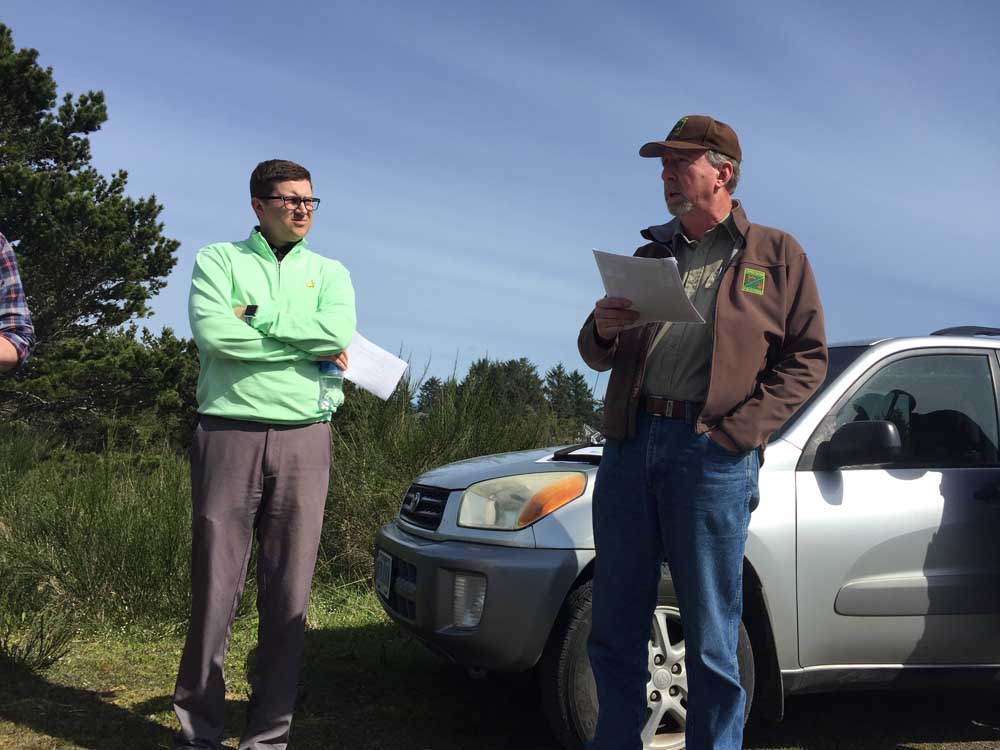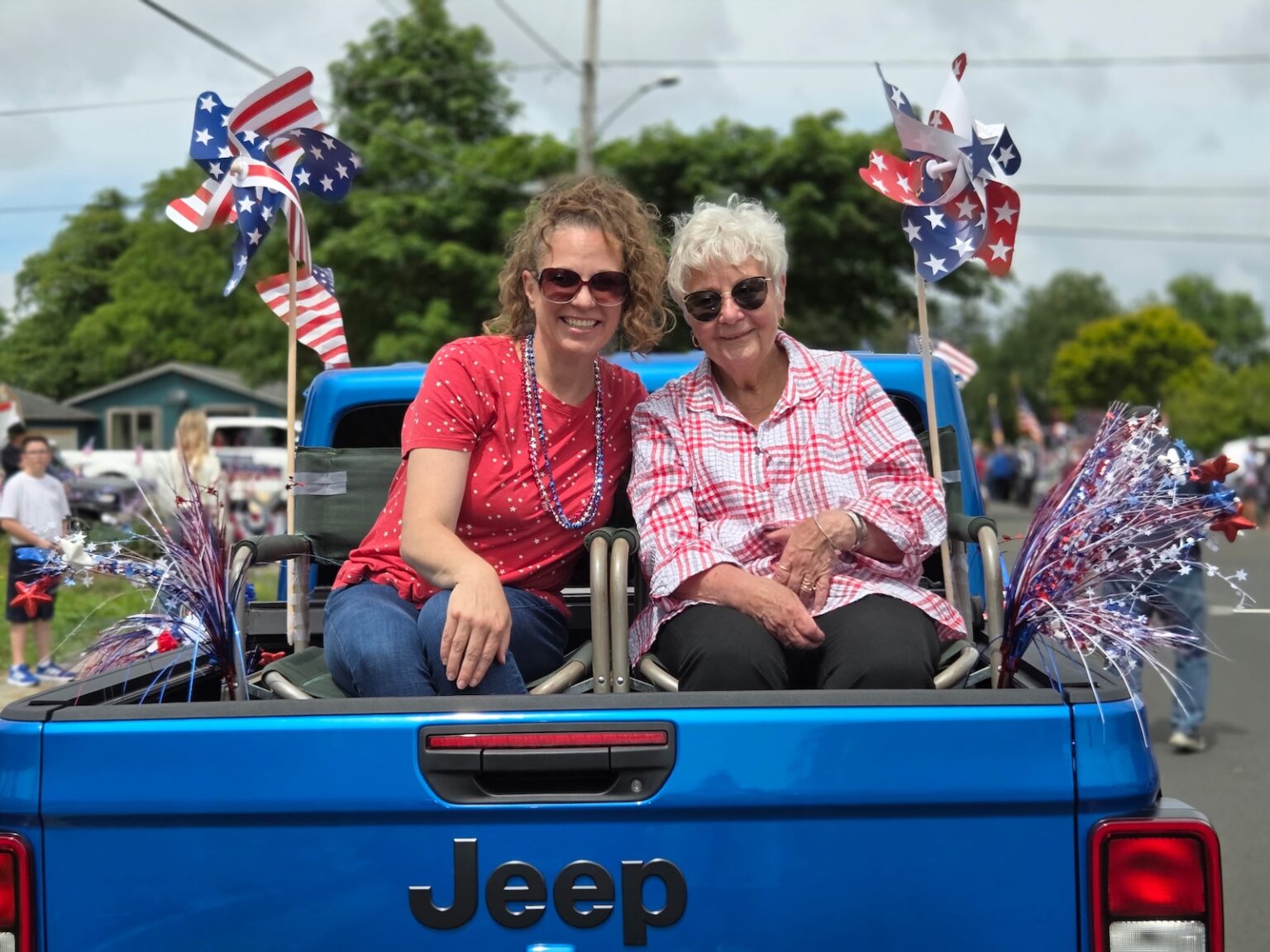Fish and wildlife commissioners tour North Coast
Published 7:51 pm Tuesday, April 24, 2018

- Gearhart Mayor Matt Brown and wildlife biologist Herman Biederbeck of the Oregon Department of Fish and Wildlife.
In the warm sunlight of a perfect spring day on the Oregon Coast, state fish and wildlife commissioners got a taste of issues they will likely have to deal with in the months and years to come, from the challenges of aging tide gates or protecting birds that have been reclassified as endangered to Gearhart’s elk woes.
They toured several sites Thursday in Clatsop County Thursday, April 19, ahead of an Oregon Fish and Wildlife Commission meeting Friday in Astoria. They stopped at Bornstein Seafoods in Astoria before dipping into Tillamook County to walk through marbled murrelet habitat in Oswald West State Park, where the endangered birds are known to nest. They talked tide gates and fish passage at McDonald Slough in Nehalem.
Trending
Gearhart was the last stop of the day.
City officials are trying to sort out what to do about public safety concerns tied to large elk herds that often hang out in town and cross major roadways, including U.S. Highway 101. In March, Fish and Wildlife Commissioner Bruce Buckmaster and state Sen. Betsy Johnson discussed elk with Gearhart Mayor Matt Brown and Warrenton Mayor Henry Balensifer. Both mayors hosted public meetings specifically to talk with the public about elk in the following weeks.
Herman Biederbeck, a state wildlife biologist, attended both of those meetings and was present on the tour Thursday. Public safety is taking over the conversation in Gearhart, he said.
“This is starting to come to a head,” Gearhart City Administrator Chad Sweet told the commissioners. “We’ve got more people coming to town, more elk — it’s coming up together.”
How people interact with elk is paramount, Biederbeck said, adding that an ordinance that prohibits the feeding of wildlife is a “great start.” Warrenton passed a law after dealing with elk that had become aggressive because people were feeding them.
He urged a collaborative approach, where all agencies who have a responsibility can get together. “The reality is, ODFW can’t do it on their own,” he said.
Among the options available to communities is setting a goal for elk population numbers, the biologist said.
“I truly believe if we can get all the stakeholders together, come up with a number for the Clatsop Plains, and work to get there. That’s probably the best way to reach that place where people can manage that situation,” Biederbeck said.
Michael Finley, chairman of the Fish and Wildlife Commission, was among the state officials and staff on the tour. Finley, a former superintendent of Yellowstone National Park, has had his own interactions with elk, especially during rut and calving seasons.
“In terms of public safety, I was chased several times,” Finley said. “I literally ran behind stone pillars. It’s real.”
For the other animal the commissioners contemplated Thursday, the marbled murrelet, the theme was, “We don’t know.”
The commission voted to uplist the small bird, which hunts and lives at sea but nests inland, from threatened to endangered in Oregon at a meeting in February. But Vanessa Blackstone, wildlife biologist with the Oregon Parks and Recreation Department, noted that when it comes to figuring out how to best help the birds recover, data is sparse.
Surveys of the population are now many years old and there aren’t enough recorded nests to answer basic questions about what kind of habitat the murrelets may or may not tolerate. They are a difficult animal to track and monitor and many questions remain, she told the commissioners.





